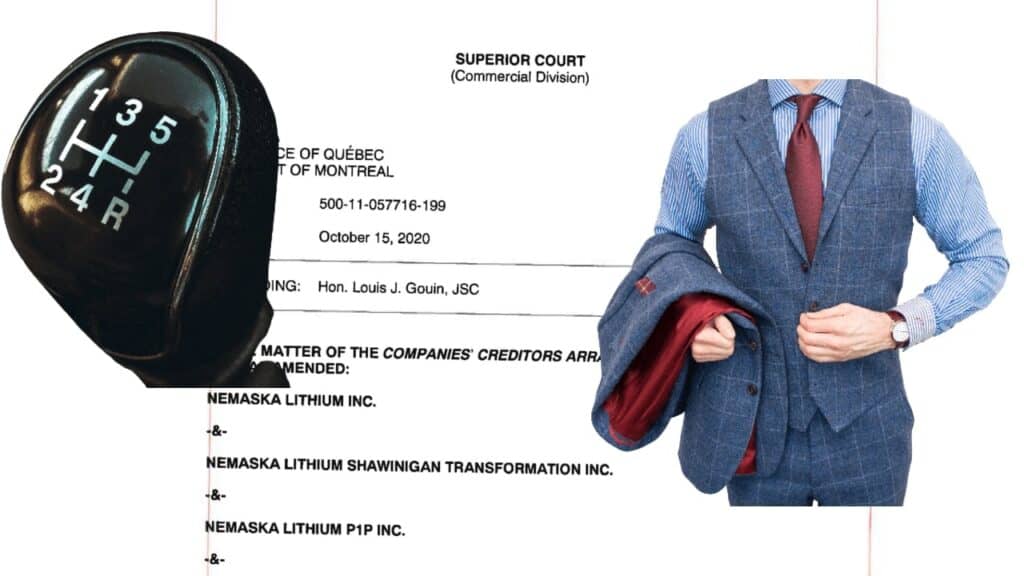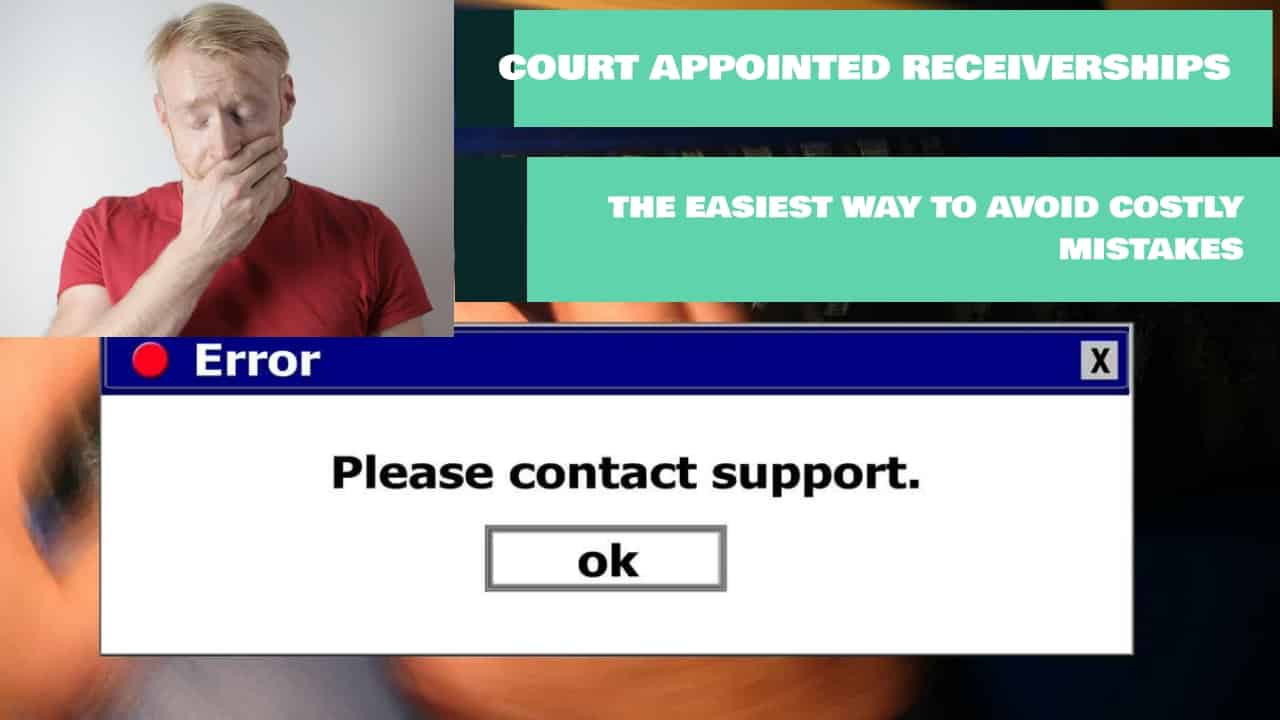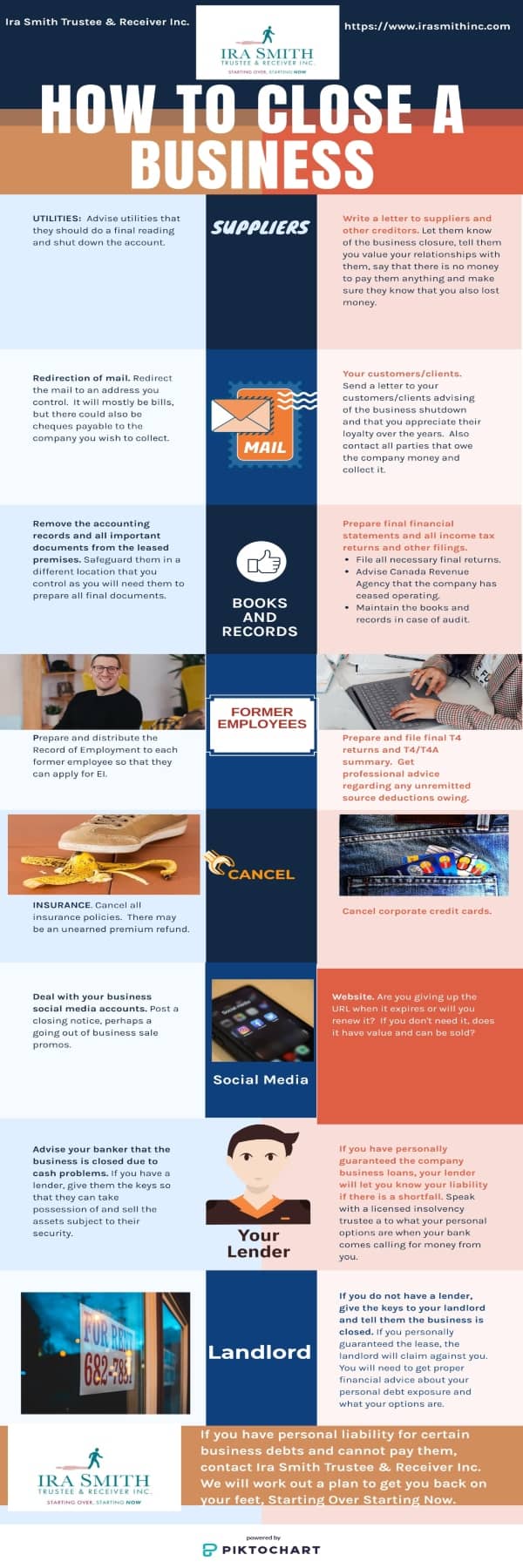The One Introduction: Toronto’s Resilient Icon at Bloor & Yonge Faces Financial Distress
For entrepreneurs and advisors across the GTA, the story of The One—now officially One Bloor West (the Project)—for some time now was Toronto’s most talked-about condo project. Now it is Toronto’s most talked-about troubled condo project. Its story offers a powerful real-world lesson in the mechanics and necessity of complex financial restructuring. As one of Toronto’s most ambitious luxury condo, hotel, and retail developments, its financial unravelling sent shockwaves through developers, creditors, and, most painfully, individual purchasers.
As a Licensed Insolvency Trustee and Senior Vice-President at Ira Smith Trustee & Receiver Inc., I’ve worked with businesses of all sizes, navigating financial distress. The One’s insolvency illustrates how court-supervised processes—specifically Receivership and the Companies’ Creditors Arrangement Act (CCAA)—can be used to stabilize troubled assets, preserve value, and manage multi-billion-dollar liabilities.
This case study explores the events that led to court intervention, the strategic decisions made to protect and enhance the Project’s value, and the difficult—but necessary—termination of hundreds of condo purchase agreements. For those advising companies facing critical debt and project risk, this case highlights the vital role of insolvency professionals in steering them toward recovery and maximizing value.
The One Descent Into Insolvency – A Pivotal Turning Point: Receivership and a New Beginning
Located at the southwest corner of Yonge and Bloor in Toronto, the 85-storey mixed-use tower was envisioned as a landmark. But Sam Mizrahi and Mizrahi Developments, the original developer, encountered years of delays, cost overruns, supply chain issues, and legal disputes.
Mounting financial strain led to court intervention. On October 18, 2023, the Ontario Superior Court of Justice (Commercial List) appointed a Receiver and Manager of the Project’s assets.
The Receiver’s Mandate
The Receiver’s role was clear but challenging: stabilize the Project, protect its value, and maximize recoveries for stakeholders. A critical early step was securing additional financing from senior secured lenders to keep construction moving.
The financial distress was immense. As of the Receivership Date, secured debt totalled approximately $1.9 billion, including accrued interest. By September 30, 2025, that figure had surpassed $2.0 billion. Notably, purchasers of condo units were not among the secured creditors—highlighting the precariousness of their position.
During this phase, the Receiver reviewed all existing contracts, including condominium sales agreements (CSAs), and assessed unit fair market values. Importantly, the Receiver made it clear that early communications did not affirm any contracts and reserved the right to disclaim them if necessary.
The One Pivot to CCAA Protection and Strategic Governance
Insolvencies of this complexity often require transitioning between legal frameworks. While Receivership provided initial stabilization, the Project ultimately moved under the CCAA to enable a more flexible and strategic restructuring.
This transition occurred on April 22, 2025, when the Court issued the Initial Order. The Receiver was appointed as Monitor, and FAAN Advisors Group Inc. became the Chief Restructuring Officer (CRO).
Why the CCAA Was Essential
For GTA businesses considering restructuring, The One demonstrates the advantages of the CCAA over traditional receivership in complex, ongoing developments:
- Ordinary Course Sales: Under the CCAA, the restructured Companies could sell units in the ordinary course of business—rather than through a Receiver’s “as-is, where-is” process. This approach is expected to yield higher sale prices and better value realization.
- DIP Financing: The CCAA enabled approval of $615 million in Debtor-in-Possession (DIP) financing to fund construction and restructuring. This capital was critical to keeping the Project on track for completion in 2028.
- CSA Plan Implementation: Section 32 of the CCAA allowed the Companies to disclaim or resiliate agreements—an essential power for executing the Condominium Sales Agreement Plan (CSA Plan) aimed at maximizing asset value.
This strategic shift, supported by Tridel (the new project manager), the Monitor, and senior secured lenders, had one goal: to maximize the Project’s value.
Maximizing The One Value and The New Era: Tridel’s Stewardship and Renewed Promise
The restructuring team concluded that the original design and existing CSAs (the Base Configuration) no longer aligned with market realities. To protect creditor recovery, the strategy focused on boosting future residential sales revenue.
Independent Validation
The Receiver engaged respected market experts—Milborne Group and Urbanation Inc.—to assess the residential component’s value. Their findings were clear:
- Milborne Group advised that aligning with a five-star luxury hotel brand could increase pricing by up to 20%.
- Urbanation Inc. confirmed that reconfiguring unit sizes and mix could command a premium over the average price per square foot (PSF) under the existing CSAs.
The One CSA Plan Reconfiguration
Originally, the Project included 415 residential units. But by 2022, demand for small, investor-type condos had sharply declined. In response, the Monitor and Tridel implemented a reconfiguration strategy:
- Reduced the total number of units to 411.
- Converted smaller one-bedroom units into larger two-bedroom suites.
- Shifted focus toward “ultra-luxury” units aligned with the anticipated hotel partnership.
This redesign, combined with the ability to resell units at significantly higher prices (compared to the $1,651 PSF average under the original CSAs), is projected to generate over $200 million in additional proceeds—directly benefiting the secured creditors.
Disclaiming The One Purchaser Contracts
Why Contracts Were Cancelled
- Nearly all Purchase and Sale Agreements (CSAs) were terminated to maximize value for creditors.
- Justice Osborne approved the disclaimer of 314 out of 329 contracts in November 2025.
- Only 15 contracts were deemed economically viable to retain.
The One Legal Basis and Process
- The Companies used Section 32 of the CCAA to disclaim agreements.
- Notices were sent on October 24, 2025, with termination effective November 23, 2025.
- The Monitor and CRO argued this was necessary due to insolvency and creditor recovery needs.
Buyer Reaction and Court Response
- Many buyers were emotionally devastated, with some attending court to oppose the motion.
- Justice Osborne acknowledged the hardship but emphasized the developer’s insolvency.
- Only one formal objection was filed by the November 10 deadline.
- Buyers were informed that any damage claims would be unsecured and likely unrecoverable.
The One Deposit Return Protocol
Protection Mechanisms
- Total deposits under disclaimed CSAs: approx. $87.5 million.
- Two protections in place:
- Tarion Bond – covers first $20,000.
- Excess Deposit Insurance – provided by Aviva Insurance Company of Canada for amounts over $20,000.
Court-Approved Refund Process
- Justice Osborne approved the protocol on November 17, 2025.
- Refunds include principal + interest (per Condominium Act, 1998).
- Administered by Aviva’s agent.
Steps for Buyers
- Submit documents via the Agent’s website:
- Release and Termination Agreement
- Government-issued ID
- Original CSA
- Refunds issued within 10 business days of Tarion confirmation.

The One Market Impact and Buyer Implications
Buyer Losses
- Buyers lost units purchased at 2017–2018 prices, now far below the current market value.
- Many expressed concern over the fairness and transparency of pre-construction contracts.
Market Lessons
- The case highlights risks in pre-construction real estate, especially in insolvency scenarios.
- Government addendums may give developers Its, eroding buyer confidence.
Early Purchase Opportunity
- Disclaimed buyers were offered early access to new units before public sale (mid-to-late 2026).
- New units are priced significantly higher due to luxury rebranding and market appreciation.
FAQs: Understanding the Financial Restructuring of One Bloor West
Q1: What is One Bloor West, and why is it important?
One Bloor West is a luxury condo, hotel, and retail building planned for the corner of Yonge and Bloor in Toronto. It was supposed to be an 85-storey tower and one of Canada’s tallest buildings. At first, it was a symbol of ambition, but delays and financial problems turned it into one of Toronto’s most troubled real estate projects.
Q2: What caused the financial problems?
The original developer, Sam Mizrahi of Mizrahi Developments, faced years of setbacks. These included construction delays, rising costs, supply chain issues, and legal battles. Eventually, the financial pressure became too much, and in October 2023, the Ontario Superior Court appointed a Receiver to take control of the project.
Q3: How much debt did the project have?
By the time the court stepped in, the project had about $1.9 billion in secured debt. By September 2025, that number had grown to over $2 billion. People who bought condo units were not considered secured creditors, meaning they were not first in line to get their money back.
Q4: What legal steps were taken to fix things?
The project first went into receivership, which helped stabilize it. Then, in April 2025, it moved under the Companies’ Creditors Arrangement Act (CCAA). This law gave the team more flexibility to restructure the project and try to save its value.
Q5: Why was switching to the CCAA important?
The CCAA allowed for:
• Regular Sales: Units could be sold normally, not just as-is, which helped get better prices.
• New Financing: The court approved $615 million in new funding to keep construction going.
• Contract Changes: The team could cancel or change old agreements that no longer made financial sense.
Q6: Why were most condo purchase agreements cancelled?
Out of 329 original condo contracts, 314 were cancelled. The court agreed that keeping them would hurt the project’s value. Only 15 contracts were kept because they still made financial sense.
Q7: What was the new plan to increase the project’s value?
The team redesigned the building to focus on ultra-luxury units, possibly with a hotel partner. They reduced the number of units from 415 to 411 and made many one-bedroom units into larger two-bedroom suites. Experts believe this could raise prices by up to 20% and bring in over $200 million in extra revenue.
Q8: What happened to buyers’ deposits?
Buyers whose contracts were cancelled had about $87.5 million in deposits. Two protections were in place:
• Tarion Warranty: Covered the first $20,000.
• Aviva Insurance: Covered amounts above $20,000.
Refunds included the original deposit plus interest, following Ontario’s Condominium Act.
Q9: What can businesses learn from this case?
Three key lessons stand out:
- Secured creditors come first: Every decision is aimed to protect those who lent the most money.
- Adapting to market changes is crucial: The project had to shift to meet luxury market demands.
- Legal flexibility matters: The CCAA helped cancel outdated contracts and move forward.

The One Business Lesson: Proactive Restructuring
For GTA entrepreneurs and the professional advisor community, the restructuring of The One offers a compelling case study in strategic insolvency management. It highlights three essential principles that can guide businesses through financial turbulence:
1. Secured Creditor Priority Is Paramount
Every major decision—from pivoting to CCAA protection, conducting market research, and redesigning the project, to disclaiming 314 contracts—was driven by the imperative to maximize recovery for Senior Secured Lenders. In Canadian insolvency law, fulcrum creditors (those most at risk of loss) hold significant influence in shaping and approving restructuring plans. Their interests must be prioritized to ensure legal and financial viability.
2. Market Realignment as a Survival Tool
The Project’s original failure stemmed from poor planning (too many small investor units) and shifting market dynamics. The restructuring demanded a bold pivot: redesigning the development to meet ultra-luxury market expectations and partnering with a trusted builder like Tridel. In times of distress, survival hinges on aggressive, market-responsive strategies that unlock asset value and restore stakeholder confidence.
3. The CCAA Enables Contractual Flexibility
Unlike many legal frameworks, the CCAA empowers debtors—under court-appointed Monitor oversight—to disclaim burdensome contracts, including long-term purchase agreements. This flexibility is vital when legacy obligations obstruct operational or financial recovery.
The One Expertise in the Eye of the Storm
The One Bloor West restructuring journey—from the tallest building Receivership to a court-approved CCAA plan—required balancing billions in secured debt, divergent stakeholder interests, and the expectations of hundreds of purchasers, all while constructing Canada’s tallest building. The successful implementation of the CSA Plan and Deposit Return Protocol safeguards buyer deposits and preserves long-term value for senior creditors.
This case underscores a critical truth: when a business faces overwhelming financial headwinds, decisive action and expert legal navigation are non-negotiable. Whether it’s a high-profile real estate insolvency or a smaller corporate crisis, the path to stability demands seasoned guidance to transform chaos into clarity.
Your Partner in Restructuring
At Ira Smith Trustee & Receiver Inc., we specialize in helping GTA entrepreneurs and businesses navigate these pivotal moments. If your company is burdened by debt, locked into unworkable contracts, or approaching a financial breaking point, engaging a Licensed Insolvency Trustee isn’t just prudent—it may be the only way to stop the bleeding, stabilize operations, and build a solvent future.
Our team brings the same level of strategic insight, legal acumen, and hands-on execution that defined The One Bloor West troubled condo project turnaround. We don’t just manage crises—we engineer recoveries.
If your business is in distress, don’t wait. Contact Ira Smith Trustee & Receiver Inc. today to take proactive steps toward financial stability.
P: 905.738.4167
Toronto line: 647.799.3312
brandon@irasmithinc.com or ira@irasmithinc.com
Disclaimer: This analysis is for educational purposes only and is based on the cited legal decisions and my professional expertise as a licensed insolvency trustee. The information provided does not constitute legal or financial advice for your specific circumstances.
Every situation is unique and involves complex legal and factual considerations. The outcomes discussed in this article may not apply to your particular situation. Court decisions are fact-specific and depend on the particular circumstances of each case.
Please contact Ira Smith Trustee & Receiver Inc. or consult with qualified legal or financial professionals regarding your specific matter before making any decisions.
About the Author:
Brandon Smith is a Senior Vice-President at Ira Smith Trustee & Receiver Inc. and a licensed insolvency trustee serving clients across Ontario. With extensive experience in complex court-ordered receivership administration, corporate restructuring, and insolvency proceedings, Brandon helps businesses, creditors, and professionals navigate challenging financial situations to achieve optimal outcomes.
Brandon stays current with landmark developments in Canadian insolvency law, including the recent The One decision that is reshaping receivership practice. He brings this cutting-edge knowledge to every client engagement, ensuring his clients benefit from the most current understanding of their rights and options.




















